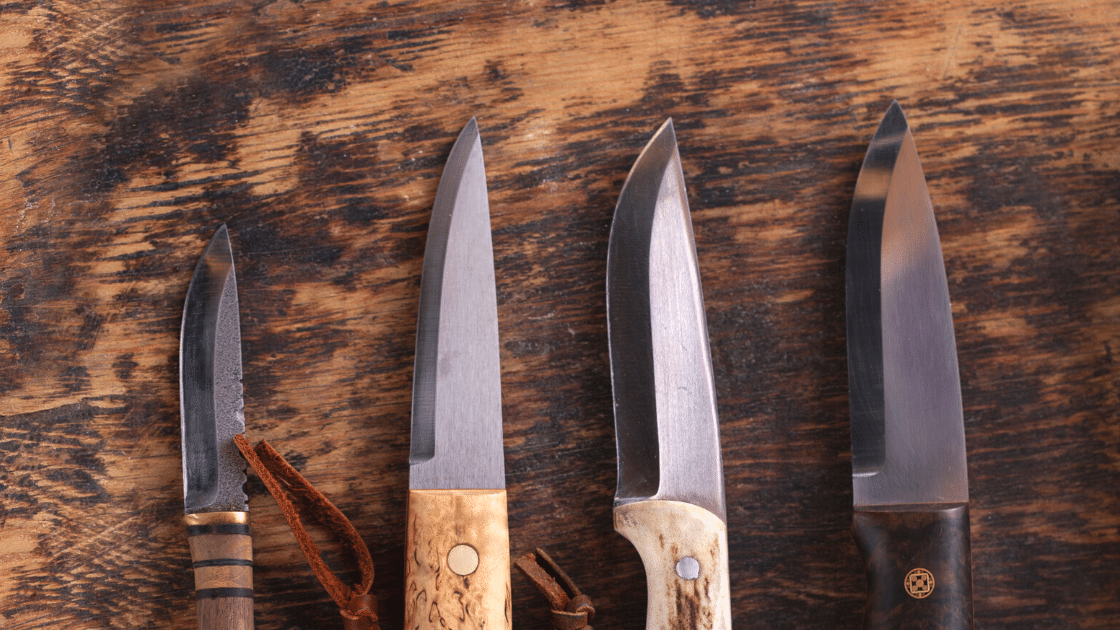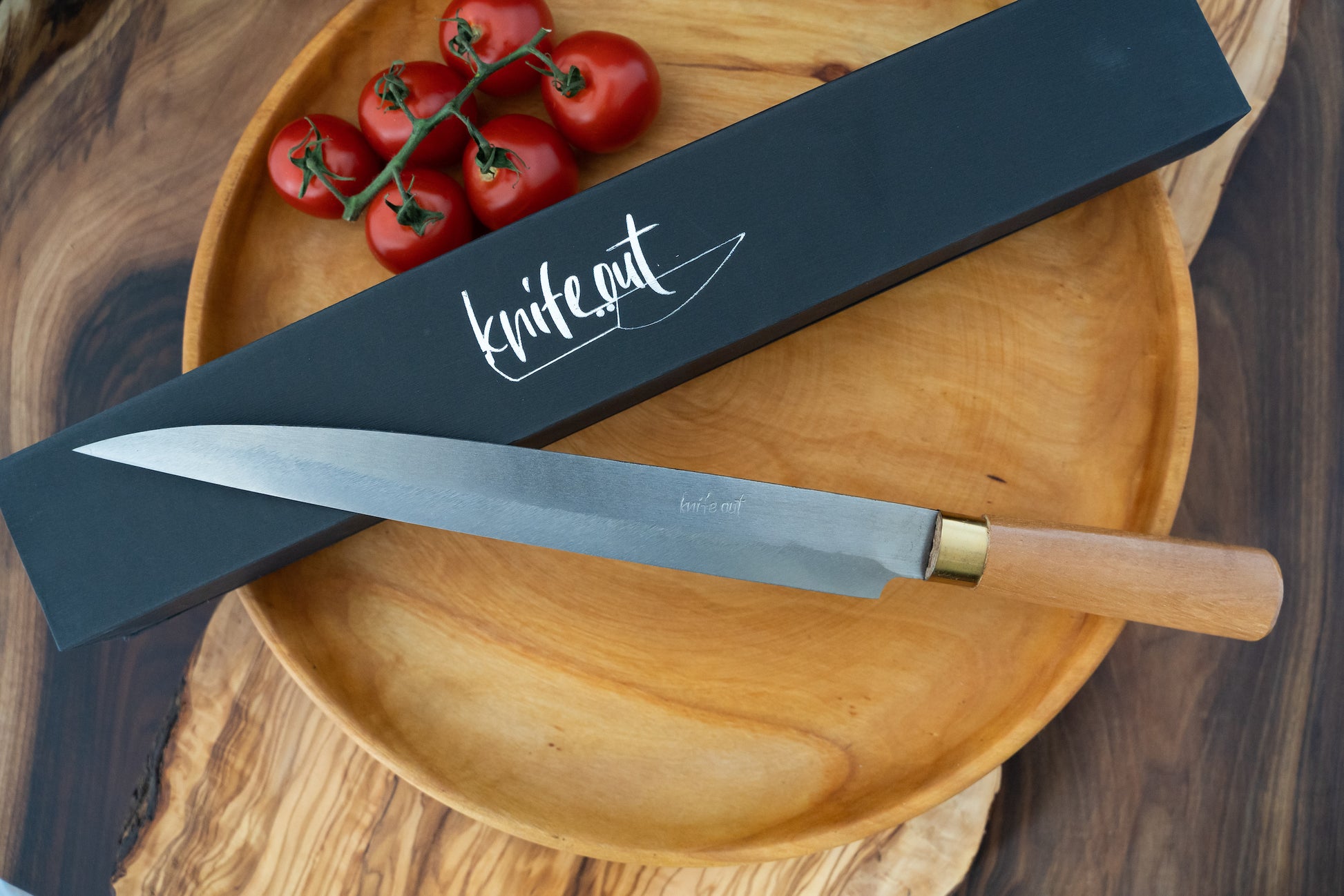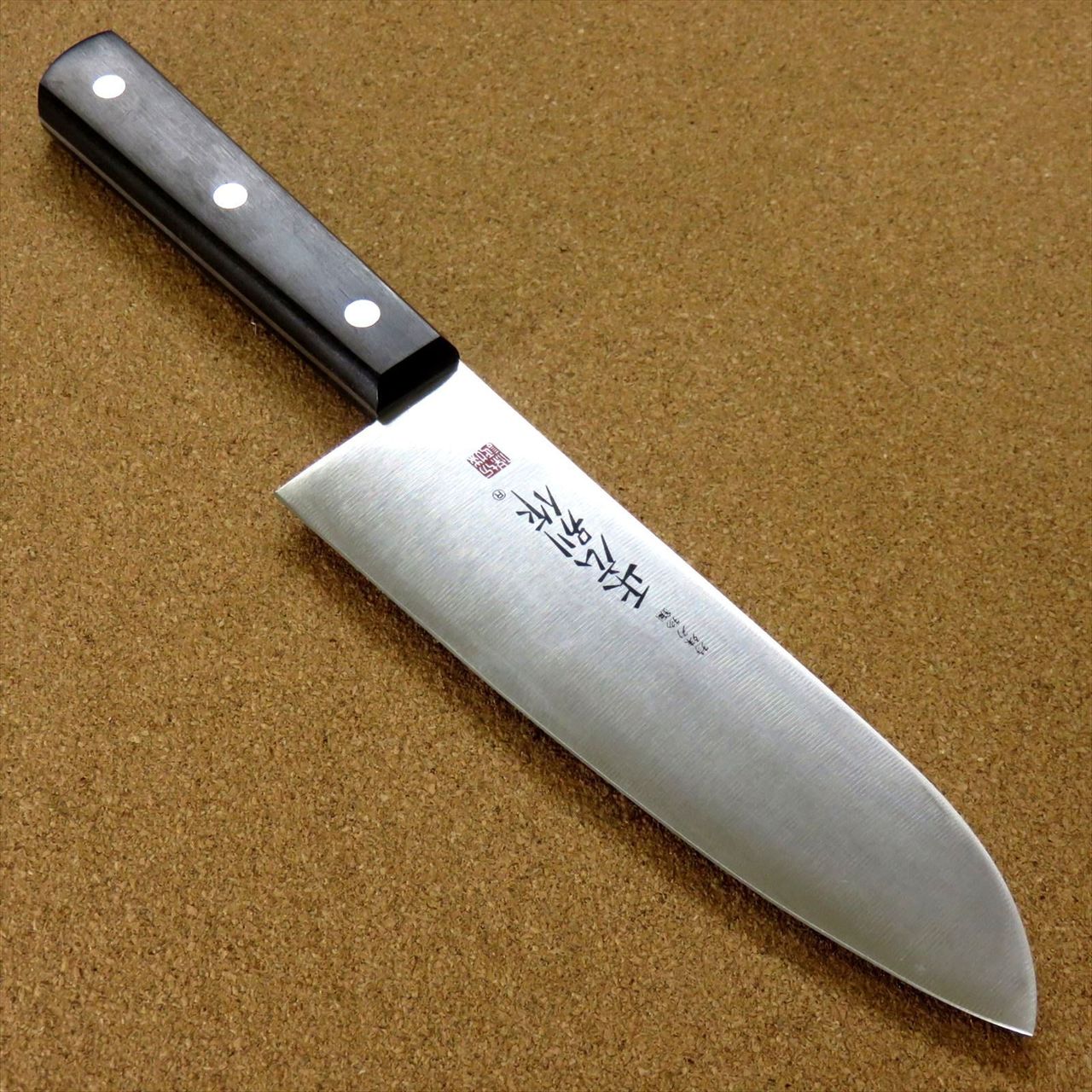Stainless Steel vs. Carbon Steel– Koi Knives
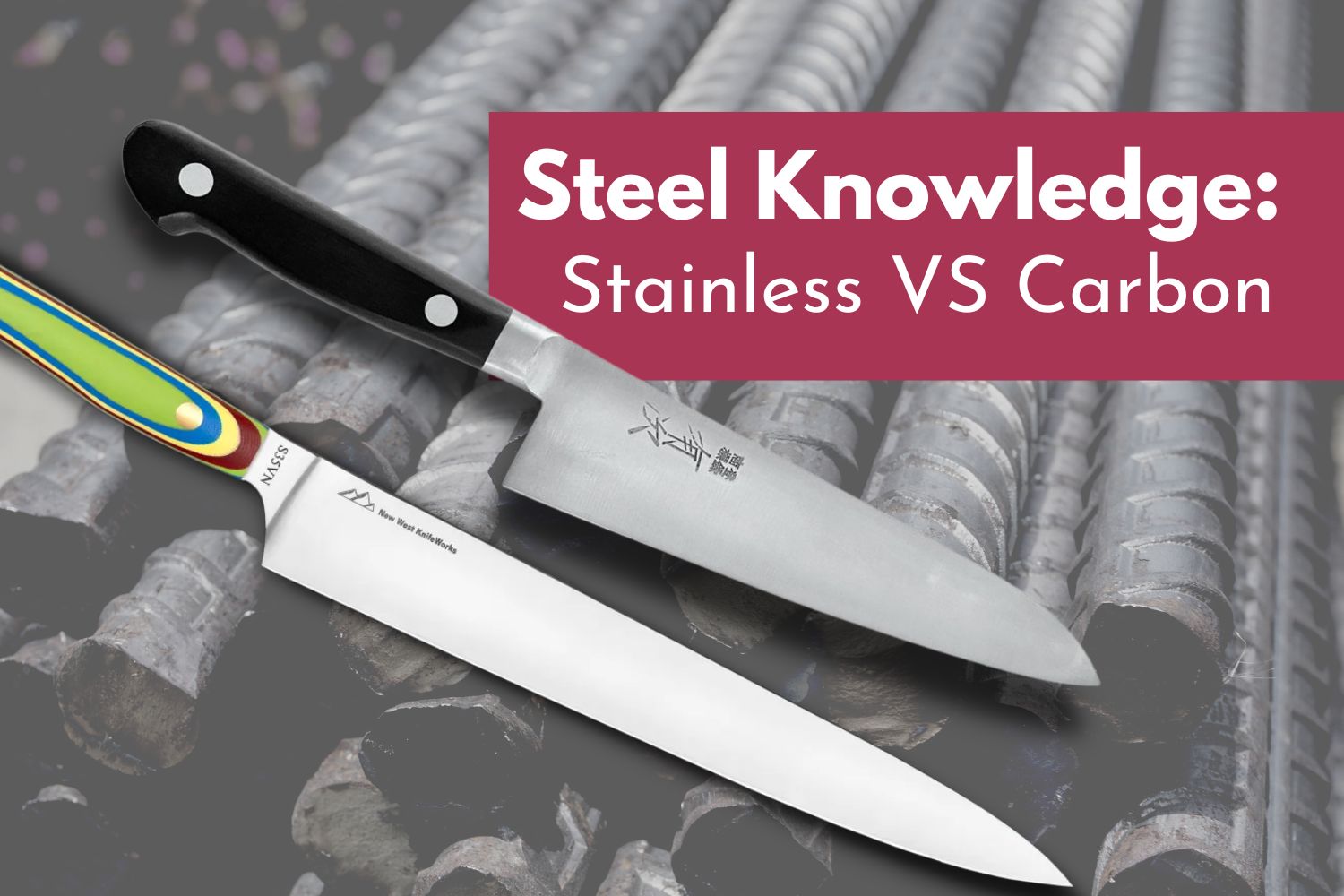
Stainless Steel vs. Carbon Steel– Koi Knives
Choosing between carbon steel and stainless steel can be difficult when shopping for a kitchen knife. Steel is a broad term for a family of metal alloys with various grades for specific applications, but generally, it's understood in two categories: carbon and stainless. Both carbon and stainless steel are made of iron.
At Koi Knives we bring to you authentic Japanese knives with Australian wood-resin handles. They are predominantly made for slicing vegetables and taking your kitchen to the next level. Feel free to visit our shed!.
Choosing between carbon steel and stainless steel can be difficult when shopping for a kitchen knife. Steel is a broad term for a family of metal alloys with various grades for specific applications, but generally, it's understood in two categories: carbon and stainless.
Both carbon and stainless steel are made of iron and carbon, but the main difference lies in their alloy content. Carbon steel has less than 10.5% alloy, while stainless steel must have a minimum of 10.5% chromium.
Whether you're an experienced cook or just starting, it's important to weigh the pros and cons of each type of steel to determine the best option for you. In this article, we'll take a closer look at the benefits and drawbacks of carbon and stainless steel to help you make an informed decision.
Steel: Understanding its Carbon Composition
The carbon content of steel places it in between cast-iron and wrought-iron. Cast iron has a carbon content ranging from 2 to 4 per cent, while wrought iron's carbon content does not exceed 0.15 per cent. On the other hand, steel can have a carbon content anywhere from below 0.25 per cent to a maximum of 1.50 per cent.
This variation in carbon content is because if the carbon exceeds 1.5 per cent, it cannot combine with iron and instead forms free graphite. The presence of free graphite distinguishes cast iron from steel, as the absence of free graphite means the material is steel. On the other hand, free graphite indicates the material is cast-iron.
Uses of Steel
Different types of steel are differentiated based on their carbon content, including mild steel, medium carbon steel, and high carbon steel. The utilization of steel is determined by the carbon content it contains.
Name of Steel
Carbon Content
Uses
Mild Steel
0.05 – 0.25%
Structural components, pipes, wire, sheets
Medium Carbon Steel
0.25 – 0.60%
Tools, machine parts, springs, gears
High Carbon Steel
0.60 – 1.5%
Cutting tools, knives, springs, wire
Carbon Steel
When people discuss carbon steel, they often refer to high-carbon steel commonly used in knife and tool making. This type of steel is known for its high hardness, which makes it resistant to abrasion and capable of retaining its shape under pressure. However, high-carbon steel is also brittle and prone to cracking when subjected to high tensile stress.
Composition of Carbon Steel
Carbon steel is an alloy composed of iron and carbon, with a carbon content ranging from 0.12% to 2.00%. It can also include alloy steels with up to 10.5% alloy content. Despite the small variation in carbon content, there are significant differences in carbon steel's physical properties, particularly in hardness.
Low-carbon steel is more widely used due to its lower production costs, higher flexibility, and ease of use in the manufacturing process. Low-carbon steel is also more flexible, deforming under stress instead of breaking. This elasticity makes low-carbon steel easy to machine and weld and is frequently used in automobile body panels, bolts, fixtures, and steel plates.
Stainless Steel
Stainless steel can be created through either casting or wrought methods. Cast stainless steel is formed by pouring liquid metal into a mould, while wrought stainless steel starts as a raw material at a steel mill and is shaped through rolling or hammering techniques. Wrought stainless steel is more commonly used, while cast stainless steel products are usually made in a foundry or with foundry supervision.
Composition of Stainless Steel
Stainless steel comprises iron, carbon, and a minimum of 10.5% chromium. The chromium provides stainless steel with its exceptional resistance to oxidation and the ability to form a thin, stable passivation layer of chromium (III) oxide when exposed to air. This passivation layer protects the interior steel from oxidation and self-heals if the surface is scratched. Unlike plating, which can be lost once the surface is scratched, the chromium in stainless steel provides more than just surface protection.
Stainless Steel Grades
Stainless steel is classified based on grades, the most common being Ferritic, Austenitic, Martensitic, and Duplex. Engineers may choose between alloys in the same family, such as 304 vs. 316 in the case of austenitic stainless steel. However, in some cases, different grades may be used for specific applications, such as 304 and 409 in automotive exhaust systems or 304 and 430 in barbeque grills.
Ferritic Stainless Steel
Ferritic stainless steel is a type of stainless steel that contains iron, carbon, and 10.5-18% chromium. Other elements, such as molybdenum or aluminium, may be present in small amounts. Ferritic stainless steel has a body-centred-cubic crystal structure, making it magnetic.
The low carbon content results in lower strength but better toughness, making it suitable for applications like vehicle exhaust pipes, fuel lines, and architectural trim. However, the ferritic type has poor weldability and reduced corrosion resistance.
Austenitic Stainless Steel
Austenitic stainless steels are stainless steel with a face-centred cubic crystal structure consisting of iron, carbon, chromium, and nickel. They are highly corrosion-resistant and non-magnetic, and their high nickel content makes them suitable for low-temperature applications.
304 and 316 are the most popular austenitic stainless steels, known for their ease of formation and welding, making them ideal for high-efficiency manufacturing. These steels can be further customized by adding alloying elements, resulting in a wide range of properties and uses.
Austenitic stainless steels are used for kitchen sinks, window frames, food processing equipment, chemical tanks, outdoor site furnishings, and more.
Martensitic Stainless Steel
Martensitic stainless steels have a body-centre tetragonal structure and contain 12-18% chromium with a higher carbon content than other stainless steels. They are magnetic and have high strength, making them ideal for applications where strength is more important than weldability or corrosion resistance. Heat treatment can harden these steels due to their high carbon content, making them useful in aerospace, cutlery, and blade applications.
Duplex Stainless Steel
Duplex stainless steel is the latest type of stainless steel, containing a higher amount of chromium (19-32%) and molybdenum (up to 5%) compared to austenitic stainless steel but less nickel. It is a hybrid of ferritic and austenitic structures, which results in a mixture of benefits.
Duplex stainless steel is more resistant to stress-corrosion cracking, tougher, and twice as strong as ferritic or austenitic grades. The main advantage of duplex stainless steel is its corrosion resistance, which is equal to or exceeds that of austenitic grades when exposed to chlorides.
Carbon Steel vs. Stainless Steel: Which Knife Reigns Supreme?
When it comes to knives, choosing the right one can be tough. With two popular options in the market - carbon steel and stainless steel - how do you know which one to choose? The answer lies in considering four important factors - edge retention, toughness, corrosion resistance, and sharpen-ability.
Edge Retention: A Battle of the Blades
Edge retention is the ability of a blade to retain its sharpness over time. Carbon steel has a higher edge retention than stainless steel, meaning it will remain sharp for longer.
Toughness Takes the Lead
Toughness refers to the resistance of a blade to chips, dents, and scratches. Carbon steel wins because it is known for its matte finish and higher tensile strength, making it ideal for outdoor activities like hunting and camping.
Corrosion Resistance: A Battle of Durability
Corrosion resistance is the ability of a knife to resist rust and corrosion in wet and humid environments. While stainless steel knives have better corrosion resistance, carbon steel is more prone to rusting.
Sharpness Without Hassle
Sharpening is an important aspect to consider when buying a knife. Carbon steel knives are easier to sharpen, despite being harder than stainless steel knives.
Final Thoughts
In conclusion, home cooks prefer stainless steel knives for their ease of storage and availability, while professional chefs choose high-carbon steel. Martensitic stainless steel is a popular choice for home cooks as it is harder than other grades but not as brittle as high-carbon steel, can be cleaned in the dishwasher, and can withstand being dropped.
The rust-resistant property helps maintain the sharpness of the blade, which is essential for everyday use.
Professional chefs, however, prefer high-carbon steel knives due to their ability to be sharpened to a fine edge, resistance to wear, and ability to hold their edge better with regular use. However, high-carbon steel is also brittle, which will break instead of bend when subjected to high-impact forces.
This makes a cleaner edge less likely to warp or lose its shape upon impact. In the end, both types of knives have their advantages, and it ultimately depends on the individual's needs and preferences.

What is better carbon or stainless steel for making knives - Noblie

Carbon Steel v Stainless Steel. What's Better? – Chefs Edge

Carbon or Stainless Steel? All you need to know – WASABI Knives

Stainless Steel vs. Carbon Steel– Koi Knives

Knife Blades: Common Steels Explained

Steel Qualities Of Kitchen Knives - A Cheat Sheet - Oishya
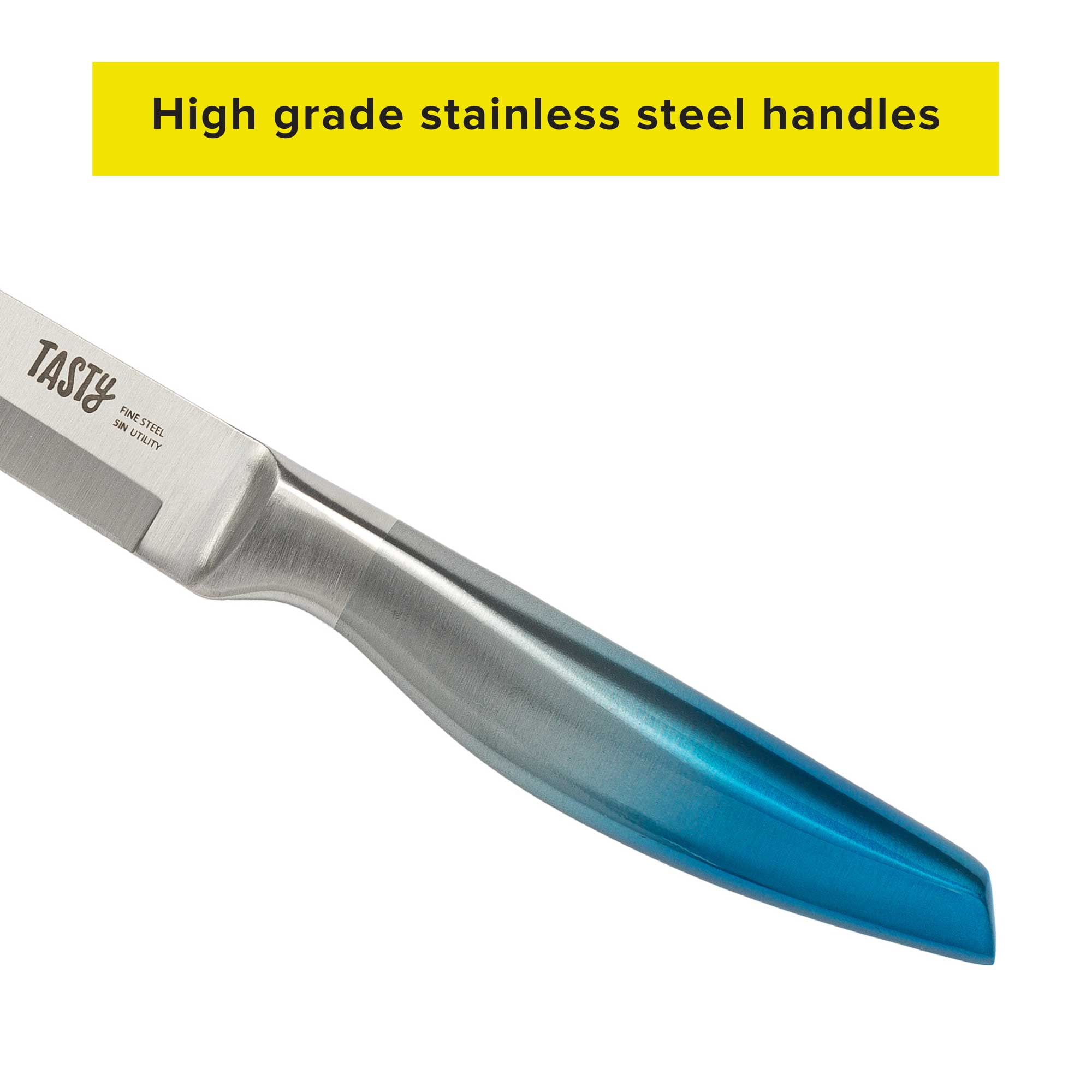
Tasty Stainless Steel Chef Knife Set with Blade Guards, Royal Blue

Carbon Steel vs. Stainless Steel: A Comparison

Choosing Your Knife: Carbon Steel v.s. Stainless Steel
